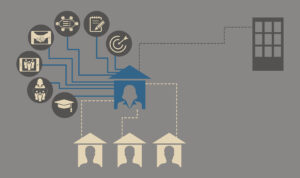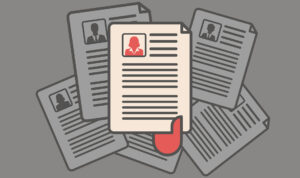By Mary Driscoll
With 6.3 million furloughed workers in the UK and an imminent tapering of the scheme, I have been speaking to many senior HR and business leaders about their plans for re-engagement of staff and the challenges that may bring. These conversations have revealed hugely complex organisational design issues to contend with as businesses work to try to understand the many different iterations of what the “next normal” could look like. In addition, the topics of wellbeing and the mental health agenda are front of mind as leaders become increasingly concerned about the impending mental health crisis.
Re-building trust with furloughed employees
Questions are repeatedly being raised around the psychological impact of being furloughed. Employees have had varying responses to this and understandably so; it presents different sets of challenges depending on very individual circumstances. What has also become apparent is that organisations have had hugely varied methods of communication with their furloughed people and this has left them feeling anything from acceptance to fear and anger.
Paul Harlington, Chief Procurement Officer at TUI, aims to be ahead of the curve on many of these issues. A mental health ambassador himself, he perhaps understands more about what could be going on for the 11,000 furloughed staff that TUI currently have. He described to me how in a 48 hour time period those 11,000 people went from working to not working. In their minds it felt like they had been made redundant, they had no job to come back to. This triggered huge waves of grief and shock. He describes further uncertainty around reduced finances, worries for the future of the business and probability for increased competition for new jobs.
Paul has a weekly call with all 70 of his team, including those on furlough, where he openly updates on the business position and plans. He makes a point of answering any questions people have honestly, and openly tells everyone when he doesn’t have the answers. How simple, yet how effective. It still amazes me how many leaders avoid this level of vulnerability.
TUI are also making a point of celebrating what those on furlough have been doing with their time, from volunteering at the Nightingale hospital and St Johns Ambulance, to pilots delivering excess plane food to those that need it.
In very large organisations, a worrying trend is uninformed middle management and junior staff because of the trickle-down effect that some organisations are using to feed through important messages. Never before has it been so important to make the leadership team available to answer those difficult questions, or to just say “I don’t know yet, but we are working on it.” Without that forum, the door is left wide open to mixed messages, individual interpretation and scaremongering, which, aside from being hurtful to individuals, will damage a culture immeasurably. We all want to feel that we are in this together, because we are.
Anticipating the guilt and frustration felt by many furloughed employees
Some organisations have started swapping people in and out of furlough, as business needs have changed. I didn’t speak to a single business leader who had yet experienced issues so far, but the expectation is that when this happens en masse it could be different. The biggest trend that some organisations have seen is that their furloughed staff are now exhibiting a sense of guilt and frustration that they are now not allowed to help the organisation and the situation. People feel like they want to be doing something to help. I also heard from businesses who are fielding a lot of anger, frustration, and feelings of “what are you going to do about it and when.”
There is a sense that lots of people will probably experience high levels of anxiety and overthinking on being asked to return. This needs to be put on the table openly. Everyone will have their own reasons for these anxieties, and they will all be valid. Hiding them will make it worse. People are craving human interaction now – bring back those small office annoyances that seemed so important a few months ago! But when we do go back, it will be vastly different to what we were used to and so we won’t get that feeling we are looking for of “thank goodness it is over.” We are all looking for a way out and whilst it will seem like progress, it will very quickly move to not enough. We as humans need more than that.
The impact on skills and flexible working
There will also certainly be an increased requirement and desire for people to want to work from home now we have proven that it works. Some businesses have already communicated to their employees that there won’t be an expectation to come into the office for the remainder of the year. This throws up many different issues around legal scenarios, technology and continued engagement of a remote workforce for businesses that are not used to working like that.
A number of HR Directors spoke about the pressing need to make sure that they are able to retain their best people during the upturn and the critical points thereon. People will remember how they were treated during this time. They will compare stories and look to work for organisations with people at their core.
Leadership skills will need to be re-assessed and updated and there will be some leaders that need to be changed out. Leaders with a greater diversity of experience and skillset, agility and adaptability and who are empathetic, humble and authentic will be in greater demand.
Tailoring the return to work
As people return from furlough, businesses will need to consider individual needs and responses to what has happened – a one-size-fits-all approach will definitely not work. Now, more than ever, leaders will need to be communicating with their people on a human level and understanding individual mind-sets.
David Balls, Group Human Resources Director at Rank Group, knows this all too well. With over 95% of venues colleagues placed on furlough and previous uncertainty around how and when those people would return to the workplace, managing individual expectations has been a significant challenge. Furthermore, across different territories, it looked like the impact would need to be modelled differently, with the UK previously in more of a binary position than lots of our European friends, creating its own challenges. Many HR Directors were facing the same issues and called for the UK to allow phased returns or furlough with reduced hours. Now that we are in a place of more certainty around how and when people can return, businesses are moving on to the next stages in their planning.
Through my conversations, I heard some great ideas around bringing people back off furlough. Paul suggested that we need praise and celebration for those returning – a huge thank you for the sacrifices they made and an acknowledgement of how difficult it was. But alongside that, not forgetting those that have worked through, often picking up extra work and broadening their responsibilities, sometimes whilst also taking a reduction in pay.
We mustn’t forget to recognise everyone in this – no-one has had it easy. One business is going to do this in the form of a ‘welcome back’ pack which will include a handwritten note from the CEO to thank the individual, as well as a quick business update on anything they have missed, some HR requirements and a plan for the future.
Following a period of intense pressure and scrutiny for HR leaders, returning employees from furlough will bring with it its own set of challenges. If you are currently working on your return from furlough plans and would like to join the discussion, please don’t hesitate to get in contact.




